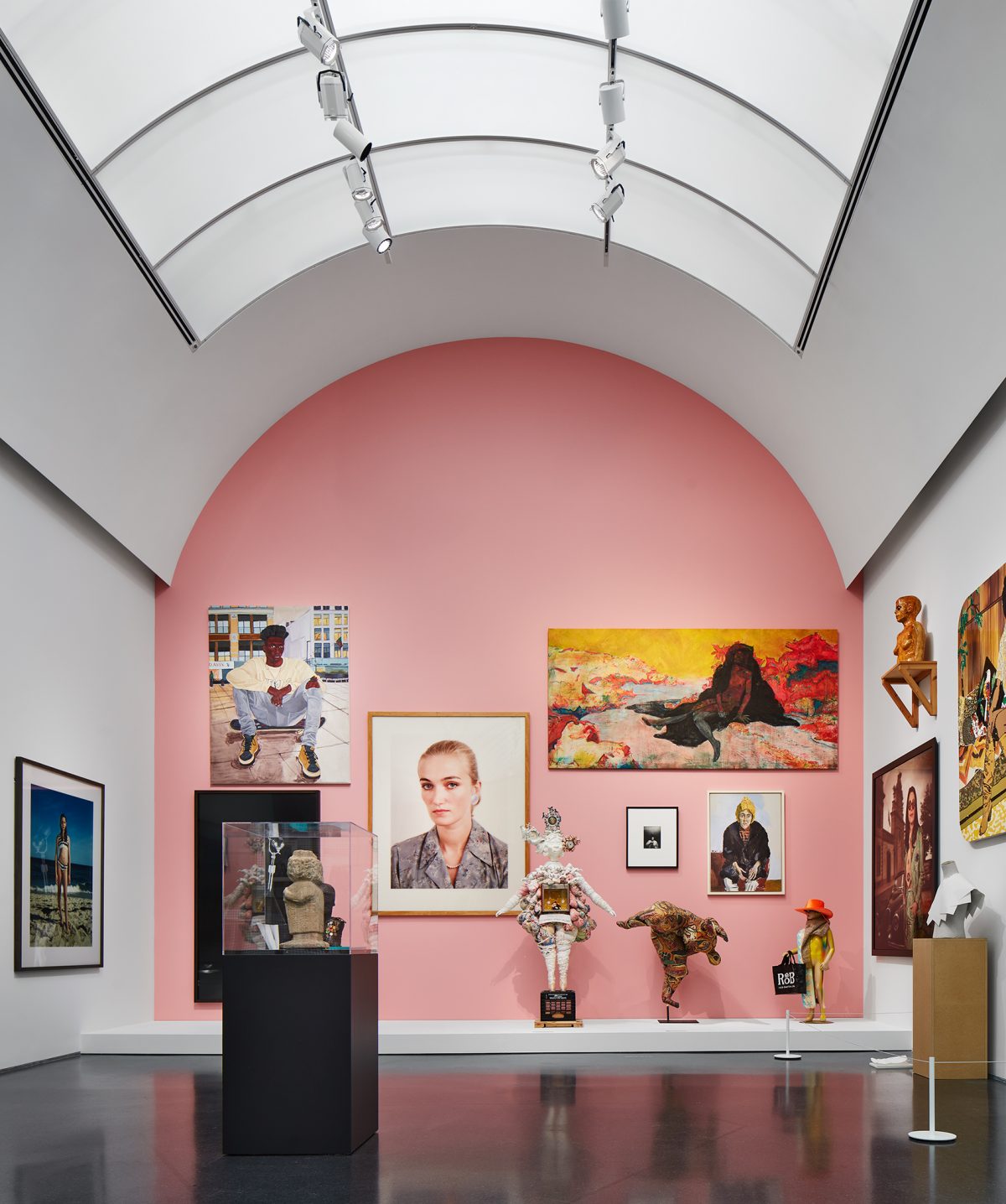The designer curated “Seeing Chicago” at the Museum of Contemporary Art, which opens Saturday.
CHICAGO — For Duro Olowu, scouring the basements of museums, museum archives and homes of private collectors while curating “Seeing Chicago,” the Museum of Contemporary Art exhibition opening Saturday, was like stumbling upon a store containing a gigantic stash of the highest-quality vintage couture textiles.
“Incredible, incredible collections,” says Olowu, the London-based designer, who collects couture fabrics from famed textile makers like Abraham. “Many of these things haven’t been shown in over 30 years. It was a treasure trove.”
With close to 350 works of art spanning six large galleries, “Duro Olowu: Seeing Chicago” is the MCA’s largest art exhibit to date and marks the first time the museum has hired a guest art curator. It is Olowu’s second time curating an exhibit, after overseeing the “Making & Unmaking” show at Camden Arts Centre in 2016 in London.
“The museums here have collections on par with the biggest art capitals of the world. Mixed in with the private collectors — you go into their homes and you can’t imagine, they have the most incredible contemporary art,” says Olowu, whose first retail account was in Chicago, at Ikram, in 2004. “I was glad to bring some of these things back into the museums.”
The exhibit features paintings, sculptures, photographs, film and fashion from a diverse mix of artists spanning the last century. There are works by Alexander Calder, Nick Cave, Max Ernst, Theaster Gates, René Magritte, Ed Paschke, Frank Stella and more.
“Every artist, whether it’s William Edmondson, Alice Neel, Jae Jarrell or Matisse, everybody in this exhibition deserves to be there,” Olowu says. “They are artists who made things in isolation, with love and integrity and passion, under so many circumstances. Even if the work is political, dealing with AIDS or oppression or subjugation, you feel the need and the passion of all these artists, the idea of leaving something behind, something meaningful and yet very familiar.”
All of the works are from Chicago, hence the exhibit’s name, except for one piece commissioned exclusively for the show by New York artist Maren Hassinger, entitled “And a River Runs Through It.”
About half the works belong to the MCA, and the rest of the pieces were borrowed from museums and private collectors from around the city, including the Art Institute of Chicago, Intuit: The Center for Intuitive and Outsider Art and the South Side Community Art Center.
“This is a collaborative effort by the entire city and everybody pitched in,” says MCA senior curator Naomi Beckwith, who organized the exhibit. “Nobody said no, we asked for a ridiculous number of works from the Art Institute and the director was like ‘we’ll make it happen.’”
Olowu brings a fresh approach toward curation, Beckwith says.
“He wanted to think about art in a way that’s wasn’t the classic museum way of seeing it, one discreet object, one after another, lots of space around it, always on a white wall,” Beckwith says. “Him being someone who loves maximal expanse created a show that’s salon-style hung, there’s art from floor to ceiling.”
Olowu may have curated the exhibit, but fashion is not the focus, not until the final gallery. This room was inspired by his boutique in London.
Here, on one side of the room, there are 30 mannequins wearing a mix of Olowu’s colorful printed designs from over the years, designed to replicate how a real woman might dress.
Olowu describes the pieces in the final gallery as “some of the most poignant art” from the last 70 years. One work is a psychedelic oil and lacquer panel by Lari Pittman, 1952, that from afar, resembles a printed fabric.
The mannequins are positioned to view the exhibit, as they appear to be visitors in the space, too.
“They are spectators observing the art, observing the people,” he notes. “I don’t think fashion is art. Fashion can be artistic. Designers are inspired by art and by artists. This is what I wanted to put across. Fashion is not art.”
Curating art exhibits allows the designer to tap into a realm beyond fashion, he notes.
“Art has always been in my life. You don’t design clothes, you draw them,” he notes. “I consider myself a fashion designer and curator. As a curator, I’m able to express a side I can’t express in fashion, it gives me these incredible ingredients. I can constantly submerge myself and broaden my view of the world.”
“Duro Olowu: Seeing Chicago” opens Feb. 29 and closes May 10 at the Museum of Contemporary Art in Chicago.

